
256-340-5188
1206 Somerville Rd
Decatur, AL 35603

256-340-5188
1206 Somerville Rd
Decatur, AL 35603
This is the Breast Reconstruction page. Three types of reconstruction will be presented here:
1. Tissue Expander and Implant Reconstruction
2. Latissimus Dorsi Muscle Flap With Expander / Implant Reconstruction
3. TRAM Flap Reconstruction
The basic goal of breast reconstruction is to make a breast mound that is as natural as possible. It must have the correct overall volume and a normal breast shape. When matching a breast on the opposite side it must achieve good symmetry. All three types of breast reconstructions can be done in an "immediate" fashion; this means that the first part of the reconstruction is done at the same operative setting as the mastectomy. All three types of breast reconstructions can be done a "delayed" fashion; this means that the mastectomy has been done in the past and the reconstruction is done later. All three types of breast reconstructions require two operations to complete. The first stage is the major operation where the breast mound is made. The second stage is where touch up work is done, implants are exchanged and the nipple areola complex is reconstructed.
Breast reconstruction is covered by almost all insurance companies. The Federal Women's Health and Cancer Rights Act of 1998 mandated both reconstruction of a surgically removed breast and also surgery and reconstruction of the other breast to produce a symmetrical appearance. There are sometimes problems with coverage for prophylactic mastectomies, which are mastectomies done to protect from breast cancer. Deductibles and co-pays are not covered and are subject to the terms of the patient's insurance contract.
During your initial consultation we will discuss all of the aspects of the operation and how it relates to you. We will have a second visit that is the pre-operative visit where I will answer all of your final questions, write the prescriptions for the medicines you will need after the surgery and you will do your pre-operative visit at the hospital.
The operation is done as an inpatient procedure at Decatur Morgan Hospital using general anesthesia. It is done in the main operating rooms at Decatur Morgan Hospital. It takes about 2 hours to perform a single sided expander procedure, 4 hours for a single sided latissimus/expander procedure and 6 hours for a single sided TRAM flap. The length of the hospital stay also varies with each procedure, being about 2 days for expanders, 4 days for latissimus flaps and 6 days for TRAM flaps.
All patients are unique and the response to post-operative discomfort is variable. Breast reconstructions have post-operative discomfort due to the work on the muscles. The expander operations have discomfort in the muscles of the chest. The latissimus operation has discomfort on the chest and on the back, where the muscle is removed. The TRAM flap has most of its discomfort in the abdomen where the muscle is removed. All patients will go the regular floor with a Patient Controlled Analgesia Pump (PCA Pump). With this pump you can control your own narcotic delivery. At some point you will be switched to a narcotic pill in the hospital and for discharge to home. Some patients take a narcotic medicine for 3 or 4 days after the surgery, some for 3 or 4 weeks. As I said, patients are all unique and their pain tolerance is very different. Almost all patients feel normal by 4 weeks.
For a desk job that does not require any heavy lifting you should expect to be away from work for 3 weeks after an expander, 4 weeks after a latissimus and 5 to 6 weeks after a TRAM flap. For a job that requires physical exertion or heavy lifting you should expect to be away from work for 6 to 8 weeks for all three types of operations.
You will need to come to the office one or two days after your discharge from the hospital and you should arrange for someone to drive you to this appointment because you will be sore and on narcotic medications. At this first postoperative check, I will change your dressings and begin to remove your drain tubes. Removing the tubes pinches a little but is not terribly painful. You will go home with a light gauze dressing that you will change every day for 3 days. I do not use any special postoperative surgical bras. You can take a full shower 24 hours after your last drain is removed. You will take off your dressings, shower, soapy water will not hurt your incisions, pat yourself dry and replace your light dressings.
Your next appointment will be in a few days depending on your drains. The next appointment will be in 1 to 2 weeks depending on your operation. At that time we will begin discussing issues like returning to work and shopping for a regular bra.
Your next appointment will be in approximately 1 month. After that I will see you again in approximately 6 months. Therefore, I will see you between 8 months and 12 months after your surgery and do a final assessment of your size and shape, assess the quality of your scars and get your final opinion on the surgery.
You can shop for a regular bra once most of the initial post-operative swelling is resolved and there are no wound problems. This is usually 4 to 6 weeks after the surgery. You can wear a very lightweight sports bra or a camisole earlier then this if you discuss it with me in the office. Generally you can resume all of you normal activities, including physical exertion and exercise 4 weeks after an expander reconstruction and 6 to 8 weeks after a latissimus or a TRAM flap reconstruction. This could be delayed slightly if there are any wound healing problems.
1. Tissue Expander and Implant Reconstruction
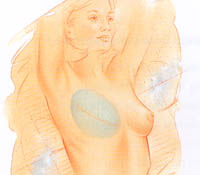
The first step is to place an adjustable tissue expander under the chest wall muscles and the chest wall skin.
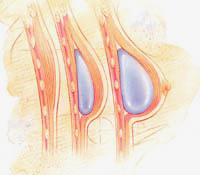
The second step is to slowly add fluid to the tissue expander to stretch and "expand" the muscle and skin. This is done over a few weeks time.

The last step is to remove the temporary tissue expander and replace it with a permanent breast prosthesis and to reconstruct the nipple and areola complex. This is the second stage operation.
Patient With Left Mastectomy Placement Of A Left Tissue Expander In A Delayed Fashion.
Second Stage Procedure Consisted Of Exchanging The Expander To An Implant And Reconstructing A Nipple Areola Complex.
Left Mastectomy
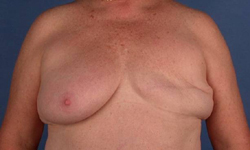
Expanded
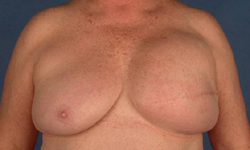
After Implant
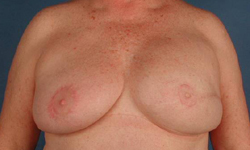
Bilateral Mastectomies And Bilateral Tissue Expander Reconstructions
Both Sides Get Fully Expanded
Second Stage Consists Of Exchanging The Expanders To Implants And Reconstructing Nipple Areola Complexes.
Patient Before
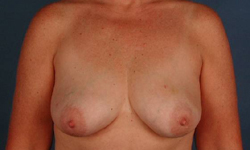
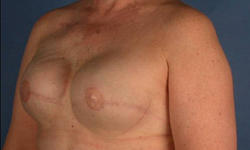
After
Expanded
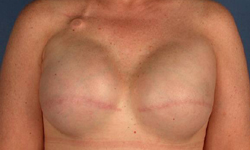
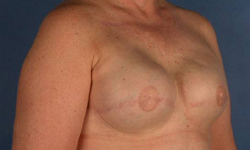
After
After
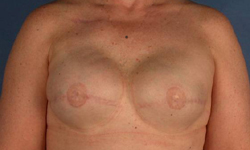
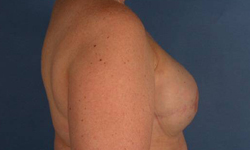
After
Bilateral Mastectomies And Bilateral Tissue Expander Reconstructions
Both Sides Get Fully Expanded
Second Stage Consists Of Exchanging The Expanders To Implants And Reconstructing Nipple Areola Complexes.
Patient Before
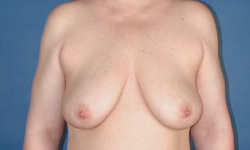
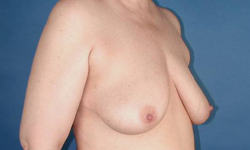
Patient Before
Expanded
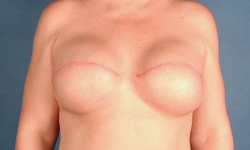
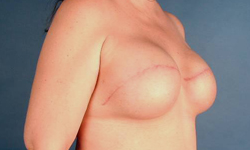
Expanded
After
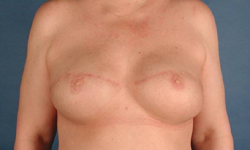
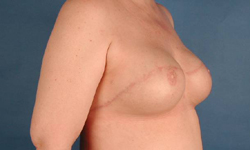
After
Bilateral Mastectomies And Bilateral Tissue Expander Reconstructions
Both Sides Get Fully Expanded
Second Stage Consists Of Exchanging The Expanders To Implants And Reconstructing Nipple Areola Complexes.
Before
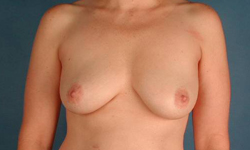
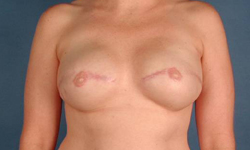
After
Before
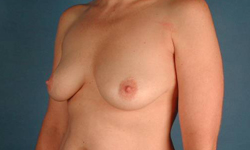
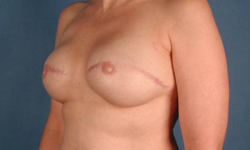
After
Before
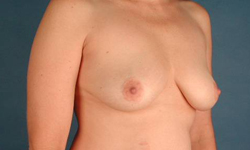
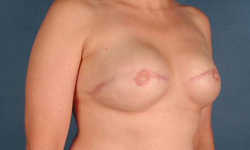
After
Bilateral Mastectomies And Bilateral Tissue Expander Reconstructions
Both Sides Get Fully Expanded
Second Stage Consists Of Exchanging The Expanders To Implants And Reconstructing Nipple Areola Complexes.
Patient Before
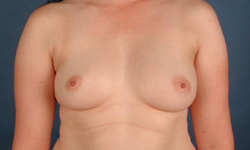

Patient Before
Expanded
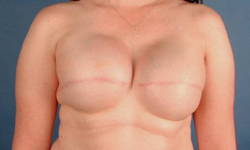
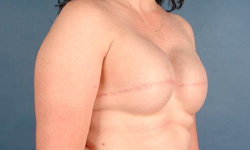
Expanded
After
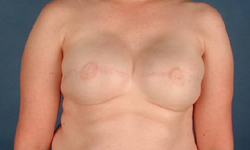
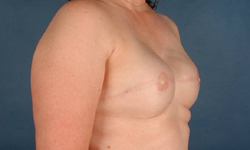
After
Bilateral Mastectomies And Bilateral Tissue Expander Reconstructions
Both Sides Get Fully Expanded
Second Stage Consists Of Exchanging The Expanders To Implants And Reconstructing Nipple Areola Complexes.
Patient Before


Patient Before
Expanded


Expanded
After


After
2. Latissimus Dorsi Flap With Tissue Expander / Implant Reconstruction
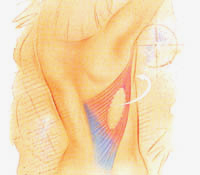
The first step is to move the back muscle, the latissimus dorsi muscle and an ellipse of back skin, around to the front of the chest
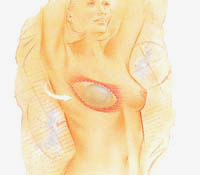
The second step is to place the latissimus muscle and skin on the chest. It can be placed over a tissue expander if expansion is needed. It may be placed over an permanent implant.
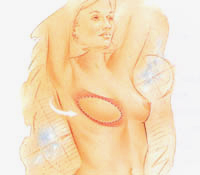
The last step is to remove the tissue expander (if used) and replace it with a permanent breast implant and to reconstruct the nipple and areola complex. This is the second stage operation
Right Mastectomy
Reconstructed With A Latissimus Dorsi Flap Over A Tissue Expander
Second Stage Consists Of Exchanging The Expander To An Implants And Reconstructing The Nipple Areola Complex.
Patient Before

Expanded

After

Left Mastectomy Reconstructed With A Latissimus Dorsi Flap And An Implant
Right Breast Had Its Shape Improved With A Breast Lift
Last Column Of Pictures Shows That The Reconstruction Is Stable At 3 Years From The Operation
Patient Before

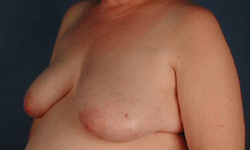
Patient Before
2 Years

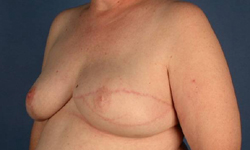
2 Years
3 Years
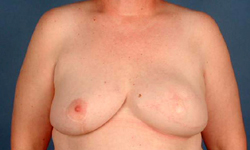
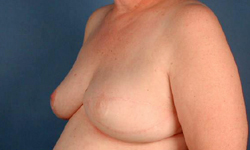
3 Years
Right Mastectomy
Reconstructed With A Latissimus Dorsi Flap Over An Implant
Patient Before

After

Back Mark
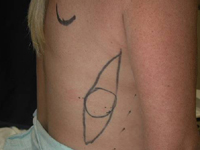
Back Scar
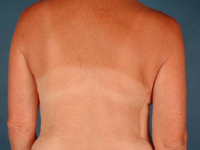
Left Mastectomy Reconstructed With A Latissimus Dorsi Flap Over An Implant
Left Breast Reduction To Achieve Breast Symmetry
Both Sides Designed With "W" Pattern Scars
Patient Before

Skin Marks
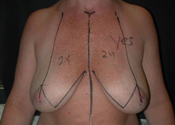
After
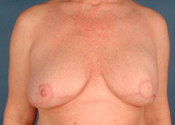
Back Marks
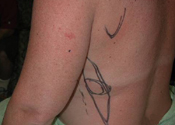
This patient was first done by another surgeon in another town.
She had a right mastectomy and attempt at right sided breast reconstruction with a tissue expander.
The reconstruction had a poor shape and poor symmetry with the other side.
I fixed her reconstruction by using a latissimus dorsi flap over an implant on the right side.
This flap allowed the addition of new lax muscle and skin to improve the size and shape of her right breast.
Before


After
Before


After
Before


After
3. TRAM Flap Reconstruction
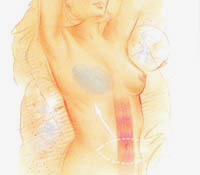
The first step is to move the lower abdomen skin and muscle, the "sit up" muscle and an ellipse of lower abdomen skin, up to the front of the chest.

TThe second step is to form the abdomen skin and fat into a breast shape that matches the other side.
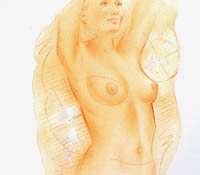
The last step is to reconstruct the nipple and areola complex. This is the second stage operation.
Right Mastectomy
Reconstructed After A Skin Sparing Mastectomy And Single Pedicle TRAM Flap.
Second Stage Consisted Of Reconstructing The Nipple Areola Complex.
Patient Before

Expanded
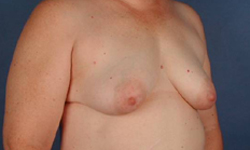
After

After
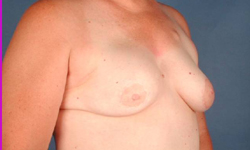
Right Mastectomy Reconstructed With A TRAM Flap
Both Sides Designed With "W" Pattern Scars.
Left Breast Reconstruction To Achieve Breast Symmetry.
Second Stage Consisted Of Reconstructing A Right Nipple Areola Complex.
Before
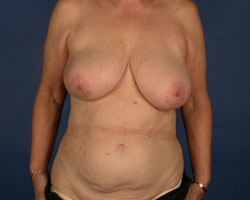
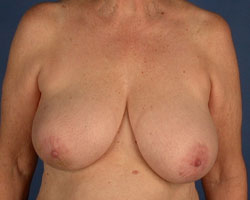
Before
After
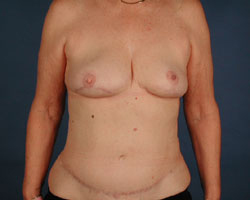
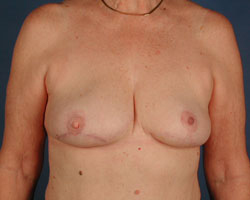
After
Before
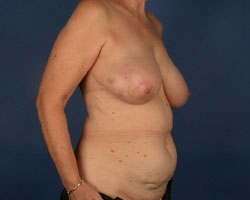
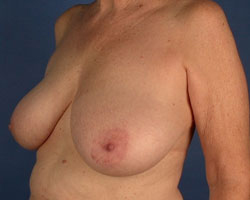
Before
After
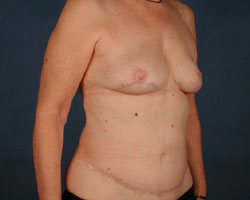
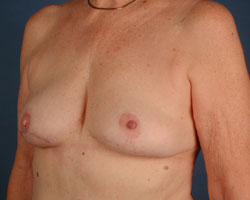
After
Right Mastectomy Reconstructed With A TRAM Flap
Both Sides Designed With "W" Pattern Scars.
Left Breast Reconstruction To Achieve Breast Symmetry.
Second Stage Consisted Of Reconstructing A Right Nipple Areola Complex.
Before

After
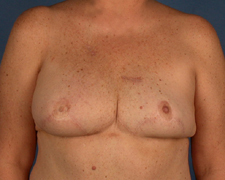
Before
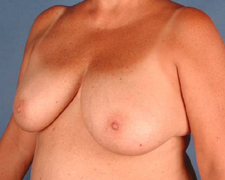
After
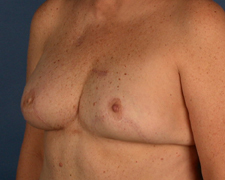
Left Mastectomy Reconstructed With A TRAM Flap
Both Sides Designed With "W" Pattern Scars.
Right Breast Reconstruction To Achieve Breast Symmetry.
Second Stage Consisted Of Reconstructing A Left Nipple Areola Complex.
Before
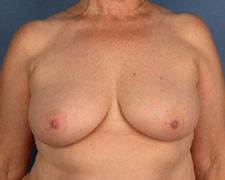
After
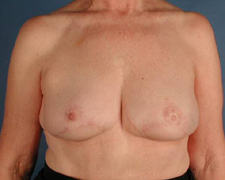
Before
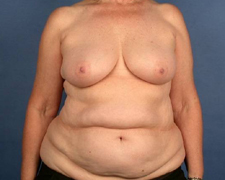
After
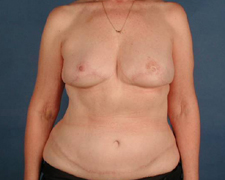
Right Mastectomy Reconstructed With A TRAM Flap
Both Sides Designed With "W" Pattern Scars.
Left Breast Reconstruction To Achieve Breast Symmetry.
Second Stage Consisted Of Reconstructing A Right Nipple Areola Complex.
Before
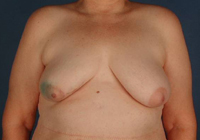
After TRAM
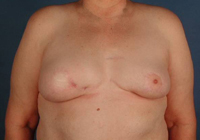
After Nipple
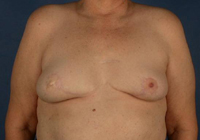
Left Mastectomy Reconstructed With A TRAM Flap
mastectomy Performed With Skin Sparing Incisions
Second Stage Consisted Of Reconstructing A Left Nipple Areola Complex.
Before
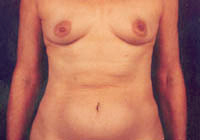
After TRAM
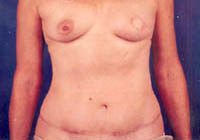
After Nipple
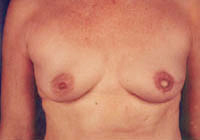
© 2005 - 2020 Gordon M. Telepun, MD
Providing care to patients in Decatur, Huntsville, Madison, Hartselle, Florence, Muscle Shoals
Photographs May Not Be Reproduced, Written Text and Descriptions are Copyrighted and May Not Be Reproduced